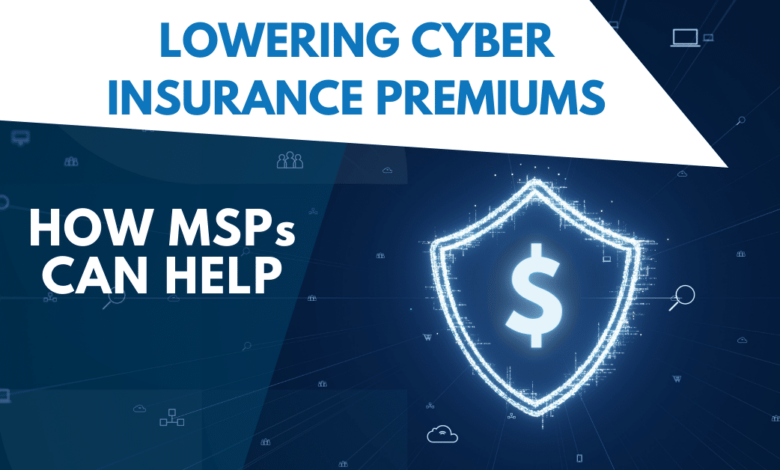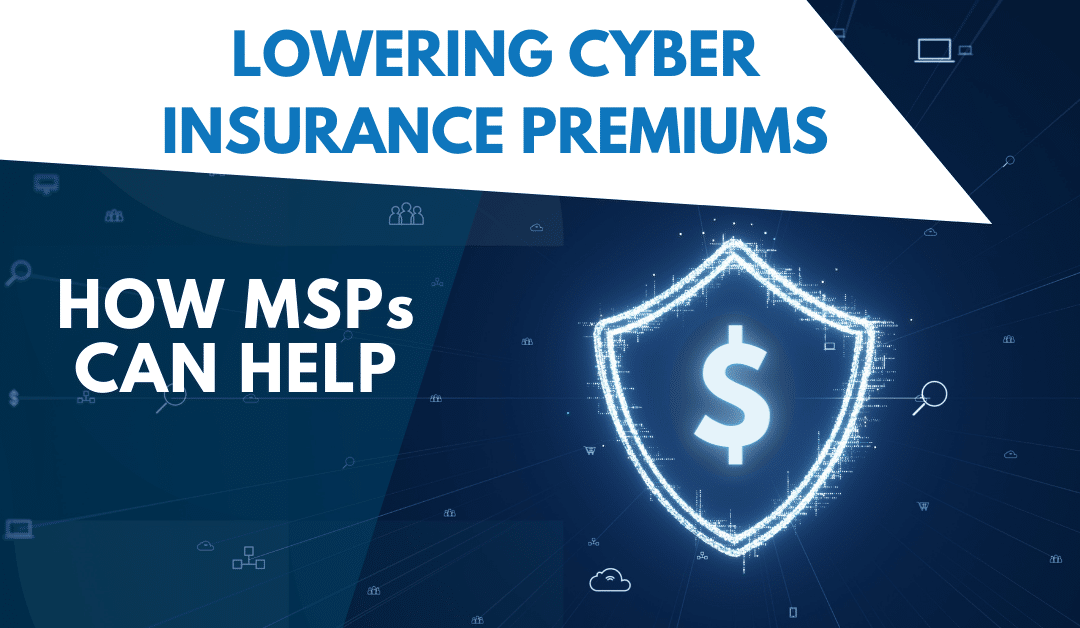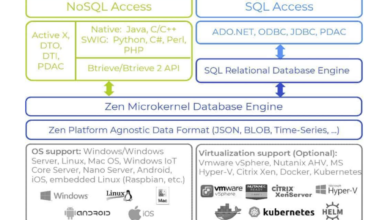
5 Ways to Counteract Increasing Cyber Insurance Rates
5 Ways to Counteract Increasing Cyber Insurance Rates – Cyber insurance premiums are skyrocketing, leaving businesses scrambling for solutions. It’s a frustrating reality, but don’t despair! This post dives into five actionable strategies to help you manage – and even lower – those ever-increasing costs. We’ll explore everything from beefing up your cybersecurity defenses to cleverly negotiating with your insurance provider.
Get ready to take control of your cyber insurance budget!
The rising cost of cyber insurance is a major concern for businesses of all sizes. However, by proactively strengthening your cybersecurity posture, implementing robust risk management practices, and exploring alternative risk transfer mechanisms, you can significantly reduce your vulnerability and, consequently, your premiums. This isn’t just about saving money; it’s about building a resilient and secure business foundation for the future.
Strengthen Your Cybersecurity Posture
Cybersecurity is no longer a luxury; it’s a necessity. A robust cybersecurity posture is the cornerstone of reducing your cyber risk and, consequently, lowering your cyber insurance premiums. Insurers assess your risk profile meticulously, and a demonstrably strong security framework significantly influences the rates you’ll pay. Investing in proactive security measures is a far more cost-effective strategy than reacting to a breach.
Implementing a multi-layered approach to cybersecurity is crucial. This involves combining various security measures to create a robust defense against cyber threats. By proactively strengthening your security, you not only reduce the likelihood of a successful attack but also demonstrate to insurers your commitment to risk mitigation, leading to potentially lower premiums.
Five Specific Cybersecurity Measures to Reduce Risk
Implementing these five measures can significantly improve your cybersecurity posture and reduce your vulnerability to cyberattacks. Each measure addresses a different aspect of security, creating a comprehensive defense strategy.
| Measure | Description | Impact on Risk | Example |
|---|---|---|---|
| Strong Passwords and Password Management | Enforce strong, unique passwords for all accounts and utilize a password manager to securely store and manage them. | Reduces risk of brute-force attacks and credential stuffing. | Using a password manager like LastPass or 1Password, enforcing minimum password length and complexity requirements. |
| Regular Software Updates and Patching | Implement a system for promptly updating operating systems, applications, and firmware to address known vulnerabilities. | Mitigates risks from exploits targeting known vulnerabilities. | Scheduling automated updates and patching for all systems, including servers, workstations, and network devices. |
| Network Segmentation | Divide your network into smaller, isolated segments to limit the impact of a breach. | Contains the spread of malware and limits access to sensitive data. | Separating the guest Wi-Fi network from the internal corporate network. |
| Intrusion Detection and Prevention Systems (IDPS) | Deploy IDPS to monitor network traffic for malicious activity and automatically block or alert on suspicious behavior. | Detects and prevents unauthorized access and malicious attacks. | Implementing a network-based IDPS that monitors for known attack signatures and anomalies. |
| Data Backup and Recovery Plan | Regularly back up critical data to an offsite location and establish a robust recovery plan to ensure business continuity in case of a data loss event. | Minimizes downtime and data loss in the event of a ransomware attack or other data breaches. | Implementing a 3-2-1 backup strategy (3 copies of data, on 2 different media, with 1 copy offsite). |
Multi-Factor Authentication (MFA) Impact on Cyber Insurance Costs
Implementing MFA across all systems significantly reduces the risk of unauthorized access, even if credentials are compromised. Insurers recognize this and often offer lower premiums to businesses that have robust MFA in place. MFA adds an extra layer of security, requiring users to provide multiple forms of authentication (e.g., password and a one-time code from a mobile app) before gaining access to systems or data.
This makes it exponentially harder for attackers to gain unauthorized access, even if they have stolen usernames and passwords. For example, a company that implements MFA across all its systems might see a 10-20% reduction in its cyber insurance premiums compared to a company without MFA, depending on the insurer and other risk factors.
Hypothetical Cybersecurity Training Program
A comprehensive employee cybersecurity training program is essential for mitigating insider threats and human error, which are often contributing factors to cyber incidents. A well-designed program can significantly reduce the likelihood of employees falling victim to phishing scams or other social engineering attacks. This directly reduces the risk profile of the business, positively impacting insurance premiums.
Our hypothetical program would consist of the following key components:
- Initial Training Module: Covers fundamental cybersecurity concepts, such as password security, phishing awareness, and social engineering tactics. This module would include interactive exercises and quizzes to reinforce learning.
- Phishing Simulation Exercises: Regular simulated phishing attacks to test employee vigilance and reinforce training on recognizing and reporting suspicious emails.
- Regular Refresher Training: Short, regular training sessions to reinforce key concepts and address emerging threats. This would keep employees updated on the latest scams and best practices.
- Security Awareness Campaigns: Ongoing campaigns using internal communications (email, intranet, posters) to maintain awareness and promote a security-conscious culture.
- Reporting Mechanism: A clear and easy-to-use system for employees to report suspicious activity without fear of reprisal.
The expected impact of this program on insurance rates would be a reduction in premiums due to the demonstrably lower risk profile resulting from a more security-conscious workforce. This reduction could range from 5-15%, depending on the insurer and the overall risk assessment of the business.
Improve Risk Management Practices

So, you’ve bolstered your cybersecurity posture – fantastic! But proactive cybersecurity isn’t just about firewalls and antivirus; it’s about understanding and mitigating your risks. Robust risk management is key to lowering your cyber insurance premiums and protecting your business from financial ruin. A well-defined risk management strategy demonstrates to insurers that you’re taking your security seriously, leading to more favorable rates.Regular risk assessments are the cornerstone of effective risk management.
They allow you to identify vulnerabilities before they’re exploited, enabling proactive mitigation and significantly reducing the likelihood of a costly breach. Failing to conduct regular assessments can leave you vulnerable to attack and ultimately impact your insurance premiums.
Key Risk Assessment Procedures
Regularly performing these five key risk assessment procedures will significantly improve your organization’s security posture and reduce your insurance costs:
- Vulnerability Scanning: Regularly scan your systems and networks for known vulnerabilities using automated tools. This identifies weaknesses in your software and hardware that attackers could exploit. Addressing these vulnerabilities promptly is crucial.
- Penetration Testing: Simulate real-world attacks to identify exploitable weaknesses in your security defenses. This goes beyond vulnerability scanning, actively testing your systems’ resilience against various attack vectors.
- Third-Party Risk Assessment: Evaluate the security practices of third-party vendors and partners who access your systems or data. A breach at a vendor can easily impact your organization.
- Social Engineering Assessments: Test your employees’ susceptibility to phishing scams and other social engineering tactics. Human error is often a significant factor in security breaches.
- Business Continuity Planning: Assess your organization’s ability to recover from a major disruption, including cyberattacks. This involves identifying critical business functions and developing recovery plans.
Incident Response Planning
A comprehensive incident response plan is crucial for minimizing the financial impact of a cyberattack. A well-defined plan Artikels the steps to take in the event of a breach, including containment, eradication, recovery, and post-incident activity. This plan should be regularly tested and updated to ensure its effectiveness. Insurers look favorably upon businesses with robust incident response plans, as they demonstrate a proactive approach to managing risk and minimizing potential losses.
A well-executed plan limits downtime, data loss, and reputational damage – all factors that significantly impact insurance premiums. For example, a company with a well-defined incident response plan might experience a shorter recovery time after a ransomware attack, leading to lower overall costs and potentially lower insurance premiums compared to a company without such a plan.
Data Backup and Recovery Best Practices, 5 ways to counteract increasing cyber insurance rates
Regular data backups and a robust recovery plan are essential for minimizing the impact of a cyberattack and reducing insurance costs. This involves regularly backing up critical data to multiple, geographically diverse locations, using a combination of on-site and off-site storage. The 3-2-1 backup rule (3 copies of data, on 2 different media, with 1 offsite copy) is a widely accepted best practice.
Regular testing of your backup and recovery procedures is also vital to ensure they function correctly in a real-world scenario. A business that can quickly and effectively restore its data after a ransomware attack, for instance, will experience significantly lower financial losses than a business that lacks a robust backup and recovery strategy. This demonstrable capability directly influences insurance premiums.
Negotiate with Your Insurance Provider

Cyber insurance premiums are on the rise, but don’t assume you’re stuck paying whatever price is quoted. Active negotiation can significantly impact your final premium. Understanding your options and presenting a strong case can lead to substantial savings. This involves researching different providers, identifying key negotiation points, and effectively showcasing your organization’s commitment to cybersecurity.
One of the most effective ways to lower your cyber insurance costs is to leverage the competitive landscape. Different insurers employ varying pricing strategies, making comparison shopping crucial. A thorough understanding of these strategies allows you to negotiate from a position of strength.
Cyber Insurance Provider Pricing Strategies
Comparing pricing strategies across different providers highlights the variability in the market. The following table illustrates how three major providers might approach pricing, based on generalized industry observations (specific pricing varies greatly depending on risk profile and policy details).
| Provider | Pricing Strategy Focus | Example |
|---|---|---|
| Provider A | Comprehensive coverage, higher base premiums, potential discounts for strong security posture. | Higher initial premium, but offers significant discounts for multi-factor authentication, penetration testing, and incident response planning. |
| Provider B | Modular approach, lower base premiums, add-on costs for specific coverages. | Lower initial premium, but additional costs for ransomware coverage, data breach notification, and business interruption insurance. |
| Provider C | Risk-based pricing, detailed security assessments, premiums adjusted based on findings. | Thorough security assessment before quoting a premium, resulting in a premium that reflects the organization’s specific vulnerabilities and mitigation efforts. |
Key Negotiation Points for Lower Premiums
Several key points can significantly influence the negotiation process. Presenting a strong case built around these points increases your chances of securing more favorable terms.
Businesses can leverage these points to negotiate lower premiums and more favorable terms:
- Demonstrate a robust cybersecurity program: This includes detailed documentation of your security controls, incident response plan, employee training programs, and vulnerability management processes. A strong security posture directly translates to a lower risk profile for the insurer.
- Explore alternative coverage options: Instead of accepting a standard package, investigate whether specific coverages are truly necessary. For instance, if your organization has robust backup and recovery systems, you may need less business interruption insurance.
- Shop around and leverage competing offers: Obtain quotes from multiple providers and use them strategically during negotiations. Highlighting a better offer from a competitor can often motivate your current provider to offer a more competitive price.
Benefits of Demonstrating a Strong Cybersecurity Posture
A strong cybersecurity posture is not merely a compliance issue; it’s a powerful negotiation tool. Insurance providers understand that organizations with robust security measures pose a lower risk of a cyber incident.
So, you’re looking at ways to fight those climbing cyber insurance premiums? One key strategy is improving your security posture, and that often involves modernizing your applications. Check out this article on domino app dev the low code and pro code future for ideas on streamlining development and reducing vulnerabilities. Efficient, secure apps are a big part of those 5 ways to counteract increasing cyber insurance rates, remember!
Demonstrating a strong cybersecurity posture during negotiations provides several significant benefits:
- Lower premiums: Insurers are willing to offer lower premiums to businesses that demonstrate a reduced risk profile.
- Increased coverage options: A strong security posture may unlock access to more comprehensive coverage options or more favorable terms.
- Improved insurer relationships: Proactive risk management builds trust and fosters a positive relationship with your insurance provider.
Explore Alternative Risk Transfer Mechanisms
Soaring cyber insurance premiums are forcing businesses to rethink their risk management strategies. Traditional insurance isn’t always the most cost-effective or even available solution. Fortunately, several alternative risk transfer (ART) mechanisms can help organizations manage and mitigate their cyber risks more effectively, potentially leading to significant long-term savings. Let’s explore some viable options.
Alternative risk transfer mechanisms offer businesses a way to handle cyber risk outside of the traditional insurance market. These options provide flexibility and control, allowing companies to tailor their risk management approach to their specific needs and risk profiles. However, it’s crucial to carefully evaluate the pros and cons of each option before implementation.
Alternative Risk Transfer Mechanisms Overview
Three common alternative risk transfer mechanisms businesses can explore include captive insurance, self-insurance, and risk retention groups. Each offers a unique approach to managing cyber risk.
- Captive Insurance: A captive insurer is a subsidiary company specifically created by a parent company (the business) to insure its own risks. This allows the parent company to retain control over risk management and potentially lower insurance costs in the long run. A captive can provide customized coverage that may not be readily available in the commercial market, particularly for complex or niche risks like advanced persistent threats (APTs).
- Self-Insurance: This involves setting aside funds to cover potential cyber losses. It’s suitable for organizations with a strong understanding of their risk profile and sufficient financial resources to absorb potential losses. Self-insurance requires careful risk assessment and planning to ensure adequate reserves are maintained.
- Risk Retention Groups (RRGs): These are group-owned liability insurance companies formed by businesses within a specific industry to pool their risks and provide insurance coverage to each other. RRGs can offer specialized coverage and potentially lower premiums than traditional insurers, especially for businesses with similar risk profiles.
Captive Insurance and Long-Term Cyber Insurance Cost Reduction
Captive insurance companies offer a powerful tool for long-term cost reduction in cyber insurance. By creating a captive, a business gains greater control over its risk management and insurance premiums. Instead of relying on commercial insurers who might prioritize profit margins, a captive allows the business to directly manage its claims and underwriting, potentially leading to lower premiums over time.
Furthermore, a well-managed captive can build up reserves to cover future claims, reducing reliance on external insurance markets and their fluctuating prices. For example, a large multinational corporation with a complex IT infrastructure and significant cyber risk exposure might find a captive more cost-effective than relying solely on commercial cyber insurance policies.
Conditions for Viable Self-Insurance of Cyber Risk
Self-insurance for cyber risk is a high-stakes strategy that requires careful consideration. It’s only viable under specific conditions. A company must have a robust understanding of its cyber risk profile, including the potential financial impact of a breach. They need to accurately assess their vulnerability to various cyber threats and estimate the potential costs of incident response, legal fees, regulatory fines, and business interruption.
Sufficient financial reserves are essential to cover potential losses, meaning the company must possess significant capital and the ability to absorb substantial financial hits without jeopardizing its operations. Finally, strong internal cybersecurity practices are paramount to minimize the likelihood of a major incident. A company with lax security measures is not a candidate for self-insurance, regardless of its financial strength.
A smaller company with limited resources and less sophisticated cybersecurity practices would be far better served by traditional insurance or a risk retention group.
Leverage Technology and Automation
So, you’ve tightened your security practices, negotiated better rates, and explored alternative risk transfer options, but your cyber insurance premiums are still stubbornly high. Don’t despair! Investing in technology and automation is a proactive strategy that demonstrably reduces cyber risk and can significantly influence your insurance premiums. By showcasing a robust and proactive security posture, you’re not just protecting your business; you’re also making yourself a less risky investment for insurers.Automated security tools are no longer a luxury; they’re a necessity in today’s threat landscape.
Implementing these tools not only enhances your defenses but also provides the quantifiable data insurers need to assess your risk profile more favorably. This data-driven approach allows you to demonstrate your commitment to cybersecurity, leading to potentially lower premiums and more favorable policy terms.
Automated Security Tools and Their Impact on Cyber Insurance
Security Information and Event Management (SIEM) systems are a prime example of how technology can lower your cyber insurance costs. A SIEM system collects and analyzes security data from various sources across your network, providing real-time visibility into potential threats. This proactive monitoring allows for faster incident response, minimizing downtime and data breaches – both significant factors in determining insurance premiums.
The ability to demonstrate a rapid and effective response to security incidents, thanks to the insights provided by a SIEM, is a compelling argument for lower rates. For example, a company with a robust SIEM system that detected and contained a ransomware attack within 24 hours could demonstrate a significantly lower risk profile compared to a company that took days or weeks to respond, resulting in substantial data loss and operational disruption.
Key Technological Investments for Lower Insurance Costs
Investing in the right technology can significantly improve your cybersecurity posture and lead to lower insurance costs. Here are five key areas to consider:
- Security Information and Event Management (SIEM): Provides centralized security monitoring and incident response capabilities.
- Endpoint Detection and Response (EDR): Offers real-time monitoring and threat detection on individual endpoints (computers, servers, mobile devices).
- Vulnerability Scanners and Penetration Testing Tools: Identify and assess security vulnerabilities before attackers can exploit them.
- Multi-Factor Authentication (MFA): Adds an extra layer of security to user accounts, making them significantly harder to compromise.
- Data Loss Prevention (DLP) Tools: Monitor and prevent sensitive data from leaving your network unauthorized.
These technologies work in concert to create a layered security approach, reducing your overall risk profile and demonstrating to insurers your commitment to proactive security.
Impact of Vulnerability Scanning and Penetration Testing on Insurance Rates
Robust vulnerability scanning and penetration testing programs are crucial for identifying and mitigating security weaknesses before they can be exploited. These programs provide insurers with demonstrable evidence of your commitment to proactive risk management. Regular penetration testing simulates real-world attacks, revealing vulnerabilities that automated scanners might miss. This proactive approach to security significantly reduces the likelihood of a successful breach, a key factor in determining insurance premiums.For instance, imagine “Acme Corp,” a mid-sized manufacturing company.
Before implementing a comprehensive vulnerability scanning and penetration testing program, Acme Corp experienced a data breach that cost them $500,000 in remediation, legal fees, and reputational damage. Their cyber insurance premiums subsequently skyrocketed. After implementing regular vulnerability scans and penetration tests, Acme Corp identified and patched several critical vulnerabilities. In the following year, they avoided a potential breach, saving them the $500,000 in losses and demonstrating to their insurer a significantly reduced risk.
This proactive approach resulted in a 20% reduction in their cyber insurance premiums the following year, highlighting the substantial return on investment in proactive security measures.
Final Review: 5 Ways To Counteract Increasing Cyber Insurance Rates

So, there you have it – five powerful ways to combat rising cyber insurance rates. Remember, a proactive approach to cybersecurity is not just about minimizing financial risk; it’s about protecting your business’s reputation, data, and future. By implementing these strategies, you’re not just saving money; you’re building a more resilient and secure business. Don’t wait for a cyberattack to strike; take control of your cybersecurity posture and your insurance costs today!
Questions and Answers
What if my business is too small for cyber insurance?
Even small businesses are vulnerable to cyberattacks. Explore basic cybersecurity measures and consider the potential financial impact of a breach before deciding against insurance.
How often should I review my cyber insurance policy?
At least annually, and more frequently if your business undergoes significant changes (e.g., expansion, new technology adoption).
Can I get cyber insurance if I’ve had a previous breach?
Yes, but it might be more expensive, and you’ll need to fully disclose the incident. Your insurer will assess the risk based on your remediation efforts.
What’s the difference between cyber liability and cyber breach insurance?
Cyber liability covers third-party claims resulting from a data breach, while cyber breach insurance covers the costs of responding to and recovering from a breach.





